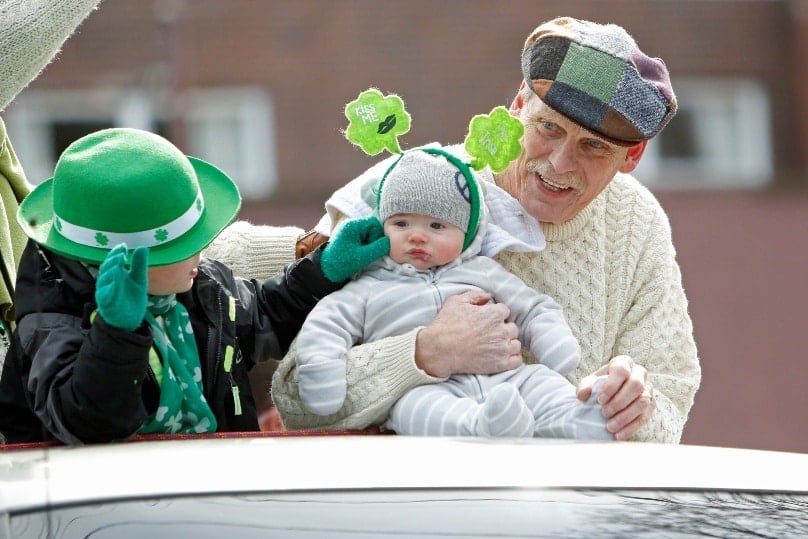
Irish people have spread their gifts far and wide through migration to other countries, often because of negative situations that encouraged them to leave their beloved green homeland.
Famine, persistent depressed economic conditions, and the continuing “troubles” have seen large numbers flee Ireland and take their often entertaining ways with them.
The talents of their writers producing writing books, plays and poems have captured much of the essence of life – and the ability to tell stories through singing and dancing has engrossed generations and inspired others to follow their lead.
Australia’s Catholic schools offered regular lessons in Irish dancing in earlier years, when St Patrick’s Day on 17 March was granted as a holiday for many students – and those attending Josephite schools were given a further break just two days later to celebrate the Feast of St Joseph.
Costs for special shoes and learning the tricks of tapping out exciting beats were additional to regular school fees but the burden was borne by many parents
because either they had come from Ireland or were products of the early generations of those who had undertaken that journey.
Interest in dancing faded as Irish-born teachers became scarce amid the development of our increasingly multi-cultural nation but many who either endured or enjoyed those lessons of past times later joined with millions of people around the world to applaud and appreciate the tapping that emerged from the Emerald Isle in spectaculars such as Riverdance.
That show, first performed in 1994, stirred broad enthusiasm for Irish dancing, according to teacher Trish McGrath who was featured on the pages of the Irish National Association’s publication called Irish Memories – Sydney Lives which was reviewed in this column on 22 November, 2015.
The association gathered reflections from 13 people in the Irish community and concluded: “The expression of Irishness through music and dancing has always been of vital importance.”
Teacher, examiner and adjudicator, Maureen Whelan has been involved with dancing for more than 50 years and reminisced about St Patrick’s celebrations when the events of the day were very much in the hands of the Church with a parade in the city, a sports carnival at Moore Park, and Mass.
She has described as “chaotic” the combination of dancing at the sports ground being mixed with the sounds of the starter’s guns for the athletics, or with the dancers having to compete against cheers being raised from enthusiastic fans watching Gaelic football matches.
Frank Hyde, the late Rugby League caller and former columnist with The Catholic Weekly, broadcast the events on radio through 2SM, which was then owned by the Catholic Church.
This year will be very different. The sports carnival disappeared long ago and the St Patrick’s Day parade is off because of traffic problems due to construction of the light rail and past financial overruns.
Only the Mass has survived and will be celebrated at St Mary’s Cathedral next Thursday at 10.30am to provide prayerful contemplation of the role St Patrick played in bringing the faith to Ireland and the way the Irish historically have been to the fore in passing it on to Australians.
It will sit between the good times and hospitality enjoyed by early visitors to many hotels for an Irish breakfast and long lunches still to come.
Stories of St Patrick and Christianity in Ireland and Australia have been part of homilies for the Mass delivered in recent years by principal celebrant Bishop Terry Brady, Fr Brendan Purcell and Fr Brendan Quirk – but two hymns have become permanent in marking connections to what could be called “the old country”.
Faith of Our Fathers is the recessional, and the celebration begins with Hail Glorious St Patrick, who is called to: “Ever bless and defend the sweet land of our birth, where the shamrock still bloom as when thou wert (sic) on earth, and our hearts shall yet burn wherever we roam, for God and St Patrick, and our native home.”
Those words have long stirred memories for people who’ve left Ireland, including so many religious who started and fanned the flames of our faith – and those teachers who encouraged the dancing and singing so strongly linked to their former home.
